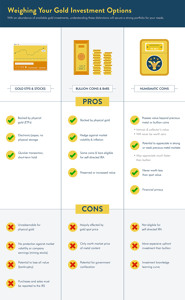Tavex uses cookies to ensure website functionality and improve your user experience. Collecting data from cookies helps us provide the best experience for you, keeps your account secure and allows us to personalise advert content. You can find out more in our cookie policy.
Please select what cookies you allow us to use
Cookies are small files of letters and digits downloaded and saved on your computer or another device (for instance, a mobile phone, a tablet) and saved in your browser while you visit a website. They can be used to track the pages you visit on the website, save the information you enter or remember your preferences such as language settings as long as you’re browsing the website.
| Cookie name | Cookie description | Cookie duration |
|---|---|---|
| tavex_cookie_consent | Stores cookie consent options selected | 60 weeks |
| tavex_customer | Tavex customer ID | 30 days |
| wp-wpml_current_language | Stores selected language | 1 day |
| AWSALB | AWS ALB sticky session cookie | 6 days |
| AWSALBCORS | AWS ALB sticky session cookie | 6 days |
| NO_CACHE | Used to disable page caching | 1 day |
| PHPSESSID | Identifier for PHP session | Session |
| latest_news | Helps to keep notifications relevant by storing the latest news shown | 29 days |
| latest_news_flash | Helps to keep notifications relevant by storing the latest news shown | 29 days |
| tavex_recently_viewed_products | List of recently viewed products | 1 day |
| tavex_compare_amount | Number of items in product comparison view | 1 day |
| Cookie name | Cookie description | Cookie duration |
|---|---|---|
| chart-widget-tab-*-*-* | Remembers last chart options (i.e currency, time period, etc) | 29 days |
| archive_layout | Stores selected product layout on category pages | 1 day |
| Cookie name | Cookie description | Cookie duration |
|---|---|---|
| cartstack.com-* | Used for tracking abandoned shopping carts | 1 year |
| _omappvp | Used by OptinMonster for determining new vs. returning visitors. Expires in 11 years | 11 years |
| _omappvs | Used by OptinMonster for determining when a new visitor becomes a returning visitor | Session |
| om* | Used by OptinMonster to track interactions with campaigns | Persistent |
| Cookie name | Cookie description | Cookie duration |
|---|---|---|
| _ga | Used to distinguish users | 2 years |
| _gid | Used to distinguish users | 24 hours |
| _ga_* | Used to persist session state | 2 years |
| _gac_* | Contains campaign related information | 90 days |
| _gat_gtag_* | Used to throttle request rate | 1 minute |
| _fbc | Facebook advertisement cookie | 2 years |
| _fbp | Facebook cookie for distinguishing unique users | 2 years |
Gold ETF vs Physical Gold: Introduction to Gold Investing

When it comes to investments, gold has always been seen as a symbol of wealth and stability. It attracts both experienced investors and beginners who want to protect their money. There are two main ways to invest in gold: Gold Exchange Traded Funds (ETFs) and physical gold.
Here we compare gold ETFs and physical gold as investment options. Each method has its own advantages and limitations, and they appeal to different types of investors depending on their preferences, how much risk they are comfortable with, and their investment goals.

Introduction to Gold Investing
Gold has always been a captivating investment asset valued across cultures and generations for its beauty, rarity and intrinsic value. Even in the modern financial world, gold is an important asset for both experienced investors looking for stability and beginners looking to protect their wealth.
One of the main reasons why gold is so attractive as an investment is its status as a safe haven. In times of economic uncertainty, geopolitical tensions or unstable markets, investors often turn to gold as a reliable store of value and a hedge against inflation.
Throughout history, gold has proven to preserve wealth during crises, making it a “crisis commodity” that retains or even increases in value when other assets fall sharply. Gold’s physical existence also distinguishes it from other financial assets such as stocks, bonds or digital currencies. Its tangible nature offers security to those who appreciate owning something physical.
Investors who worry about the vulnerability of fiat currencies to economic fluctuations often diversify their portfolios with gold to reduce currency risk.
In addition to its role as a safe haven, gold has deep cultural significance as a symbol of wealth and prosperity. In various societies, gold has been used in cultural practices, ceremonies and religious traditions, reinforcing its intrinsic value.
This universal reverence for gold makes it widely accepted as a form of wealth sought after by individual investors and central banks looking to bolster their reserves.

What are Gold ETFs?
Gold ETFs, short for Gold Exchange-Traded Funds, are a widely used and convenient way for people to invest in gold without owning the physical metal. These funds operate like open-end or exchange-traded funds, allowing investors to buy shares that track the price movements of gold-related assets.
These shares are traded on major stock exchanges, making it easy for individuals to invest in gold without physical ownership.
Gold ETFs are designed to closely track the price of real gold. This financial instrument allows investors to share in the ups and downs of the gold market without owning physical gold. It’s like investing in gold without storing or handling the metal.
Gold ETFs typically own physical gold bars or assets related to gold that reflect the value of the metal they want to track. Each share in the ETF is linked to a specific amount of gold, such as a fraction of an ounce, and its value moves in line with changes in the price of gold.
The best part is that these ETFs are traded on exchanges, so investors can easily buy or sell their shares at any time during the trading day at the current market prices. This provides a lot of flexibility and liquidity.
These ETFs are also very transparent in their pricing. The value of the ETF’s assets closely matches the current market price of gold, making it an easy and efficient choice for all types of investors, whether individuals or large institutions.

How do gold ETFs work?
Gold ETFs work simply and blend the benefits of regular mutual funds and listed stocks. They collect money from investors to buy and hold either physical gold or financial products related to gold. This creates a pool of assets that represent the value of the gold they are trying to follow in the market.
Unlike mutual funds, Gold ETF shares are traded on exchanges, giving investors the flexibility to buy or sell shares throughout the trading day at market prices instead of being limited to a single daily price like mutual funds.
The value of each Gold ETF share is directly tied to a specific amount of gold. As the gold price fluctuates, the ETF’s net asset value (NAV) changes at the same rate. The fund’s objective is to replicate the development of the gold price, either directly by holding physical gold or indirectly through derivatives and other gold-related financial instruments.
To ensure that the ETF tracks the price of gold as closely as possible, professional fund managers carefully manage the fund’s holdings and buy and sell gold assets as needed.
Gold ETFs offer investors several conveniences and efficiencies. By investing in shares of a gold ETF, investors gain exposure to the gold market without the need for physical storage or the complexity of buying and selling physical gold.
Additionally, trading Gold ETF shares on exchanges provides liquidity and flexibility, allowing investors to transact quickly and at market prices. This ease of access and transparent pricing makes gold ETFs attractive to those looking to add gold exposure to their investment portfolios.
Pros and Cons of Gold ETFs

Benefits
- Diversification: Gold ETFs offer investors an easy and cost-effective way to diversify their investment portfolios. By holding shares in a gold ETF, investors gain exposure to the gold market without directly buying physical gold. This diversification can be especially valuable during economic uncertainty when gold typically acts as a safe-haven asset, offering protection against market volatility and inflationary pressures.
- Liquidity and Availability: Gold ETFs are traded on major exchanges, giving investors high liquidity and flexibility to buy or sell shares throughout the trading day at market prices. This availability allows investors to quickly adjust their positions in response to changing market conditions.
- Cost-effective: Gold ETFs generally have lower costs than acquiring and storing physical gold, making them an affordable way to invest in gold. The cost efficiency of gold ETFs is attractive to investors who want exposure to gold without incurring the high transaction costs or storage fees associated with physical gold ownership.
- No storage issues: Gold ETF investors don’t have to worry about the storage and security issues of owning physical gold. The burden of safely storing the precious metal is shifted to the fund provider or custodian, giving investors peace of mind.
- Transparent pricing: The value of gold ETF shares closely follows the current market price of gold. The ETF’s net asset value (NAV) is updated frequently during the trading day and reflects changes in the underlying gold price. This transparency ensures that investors can easily monitor the progress of their investments.
Disadvantages
- Market Risk: Gold ETFs are subject to market risk like any investment that is linked to the price of an underlying asset. The value of Gold ETF shares may fluctuate based on changes in the price of gold. If the gold market experiences significant volatility or a prolonged downtrend, the value of the Gold ETF Shares may decline, which may result in losses for investors.
- Tracking errors: Some gold ETFs may not perfectly track the performance of the underlying gold price. Factors such as costs, management inefficiencies and the use of derivatives can lead to discrepancies between the ETF’s return and the actual gold price, resulting in a tracking error.
- Counterparty Risk: Gold ETFs that use derivatives or invest in financial instruments instead of directly holding physical gold may be exposed to counterparty risk. If the counterparty, e.g. the issuer of the derivatives or financial products, defaults or experiences financial difficulties, it may have a negative impact on the ETF’s performance and investors’ returns.
- Paper Gold Investments: Some investors prefer to own physical gold as a tangible asset and express concern about the paper nature of gold ETFs. Gold ETFs represent ownership of gold-related financial instruments rather than physical gold, which may not suit those seeking direct ownership of the precious metal.
- Expense Ratios and Fees: Gold ETFs generally have lower expense ratios than actively managed funds but still have management fees. These fees can affect returns, especially during periods of low or negative price movements.
As with any investment, it is important to understand the pros and cons of gold ETFs in order to make informed decisions. Investors should carefully assess their risk tolerance, investment objectives and preferences before deciding whether to include gold ETFs in their investment portfolio. Diversification, professional advice and a balanced investment strategy can help reduce some of the risks associated with gold ETFs and contribute to a well-rounded investment strategy.
What is an investment in physical gold?
Physical gold is considered the “real” gold and has been valued for thousands of years as a sign of wealth, prosperity and beauty. People have admired its lustrous appearance, ability to be easily shaped and resistance to damage, making it highly sought after for decorations and as a form of money since time immemorial.
In today’s financial markets, physical gold remains popular with investors looking to preserve their wealth, diversify their portfolios and protect themselves against economic uncertainties.
Acquiring physical gold can be done in different ways. Many investors choose gold coins minted by the government or private mints. These coins come in various denominations, sizes and designs, and often depict national symbols or historical figures.
The most famous gold coins are the American Gold Eagle, the Canadian Gold Maple Leaf and the South African Krugerrand.
Another option is to invest in gold bars, which range in size from small 1-ounce bars to larger kilogram bars, providing flexibility for investors with different budgets.
Why invest in physical gold?
Physical gold is known for its high liquidity, making it relatively easy to convert to cash or other assets when needed. Reputable gold dealers and bullion sellers are readily available and guarantee fair pricing based on prevailing gold market rates. This liquidity attribute enables investors to quickly react to changing financial conditions or take advantage of potential opportunities.
One of the main reasons investors turn to physical gold is its potential to act as a hedge against inflation and economic uncertainty. Gold has a history of maintaining its value and is considered a safe choice during uncertain economic situations. When the stock market is shaky, currencies lose value or tensions arise between countries, physical gold can be a safe place to protect your money and help diversify your investment portfolio.
In addition, physical gold ownership eliminates counterparty risk, a risk associated with other financial assets that depend on the reliability and financial health of an issuer or institution. The investor owns a tangible asset in the form of physical gold without being dependent on a third party to fulfill its obligations.
As with any investment, there are some considerations to make when choosing physical gold. Storage costs, security measures and the risk of counterfeit products should be carefully evaluated. Additionally, fluctuations in the gold market can affect the value of physical gold holdings, and investors should take a long-term investment perspective when including physical gold in their portfolio.
Pros and cons of investing in physical gold

Benefits
- Tangible asset: One of the main advantages of physical gold is its tangible nature. Investors who own physical gold have a physical asset they can hold and touch, providing a sense of security and ownership not found with other paper or digital assets. This tangible quality appeals to people who value the physical presence of their investments.
- Safe asset: Physical gold has a long history of being considered a safe asset. During economic uncertainty, geopolitical tensions or market volatility, gold often acts as a store of value and a hedge against inflation. Gold has proven to be able to hold its value and even increase in value when other asset classes experience significant declines.
- No counterparty risk: Unlike many other financial assets, ownership of physical gold is not dependent on the stability or credibility of any issuer or financial institution. When you own physical gold, you are not exposed to counterparty risk, meaning you do not have to rely on any third party’s promises or financial health.
- Portfolio diversification: Physical gold can act as a diversification tool in investment portfolios. Its performance tends to have a low correlation with other asset classes such as stocks and bonds, providing potential risk reduction and improved portfolio stability.
- Privacy: Owning physical gold can provide privacy when it comes to investment holdings. Some investors prefer transparency, while others value the privacy of owning a tangible asset outside of the financial system.
Disadvantages
- Storage and security issues: Storage of physical gold requires secure premises or safe deposit boxes, which may incur additional costs. Investors must carefully consider the security and insurance of storing their gold to protect against theft or loss.
- Liquidity issues: Physical gold may have lower liquidity than other financial assets, especially when trying to sell large quantities quickly. Finding a buyer at a reasonable price can take more time and effort, especially during periods of low demand or illiquid markets.
- Transaction costs: When investors buy or sell physical gold, they may incur transaction costs, e.g. dealer premiums or sales spreads, which may affect the total return.
- Price transparency: Unlike gold ETFs, where the net asset value closely follows the current market price of gold, the price of physical gold can vary by seller, location and other factors. This lack of standardised pricing can create discrepancies when buying or selling physical gold.
- Not as liquid during times of crisis: Although gold is often seen as a safe asset, physical gold can be difficult to convert into cash or other assets during extreme financial crises or economic collapses. The exchange system can prevail in such severe scenarios, affecting the liquidity of the metal.
Summation
Investing in gold ETFs and physical gold has its own advantages and disadvantages, which suit different types of investors and their goals. The choice between the two depends on individual situations, how much risk they can handle and what they want to achieve financially.
Gold ETFs are simple and cost-effective because they allow you to invest in gold without physically owning it . They offer quick access to the gold market, clear pricing and diversification benefits, making them attractive to those who want flexibility in their gold investments.
With gold ETFs, you don’t have to worry about storing or handling physical gold. However, keep in mind that there are still some risks with some ETFs, such as market fluctuations, tracking accuracy and counterparty risk.
Physical gold has its own enduring appeal as a tangible asset with intrinsic value. It is considered a safe haven and a hedge against financial uncertainty, providing a sense of security during turbulent times in the market.
Owning physical gold eliminates the risk of relying on others and offers privacy for investors who prefer a tangible asset outside the financial system. However, there are factors to consider, such as storage costs, lower liquidity and transaction costs when investing in physical gold.
In conclusion, gold ETFs and physical gold have both advantages and disadvantages. Gold ETFs are great for investors looking for cost efficiency, easy access to cash and diversification. On the other hand, physical gold appeals to those who value material possessions and see gold as a safe haven.
Before making a decision, investors should assess their risk tolerance, investment objectives and preferences. Some may choose a mix of both to take advantage of the benefits of both and create a balanced and diversified portfolio.It is important to seek professional advice and do thorough research to make informed decisions based on individual financial circumstances and long-term goals.




















